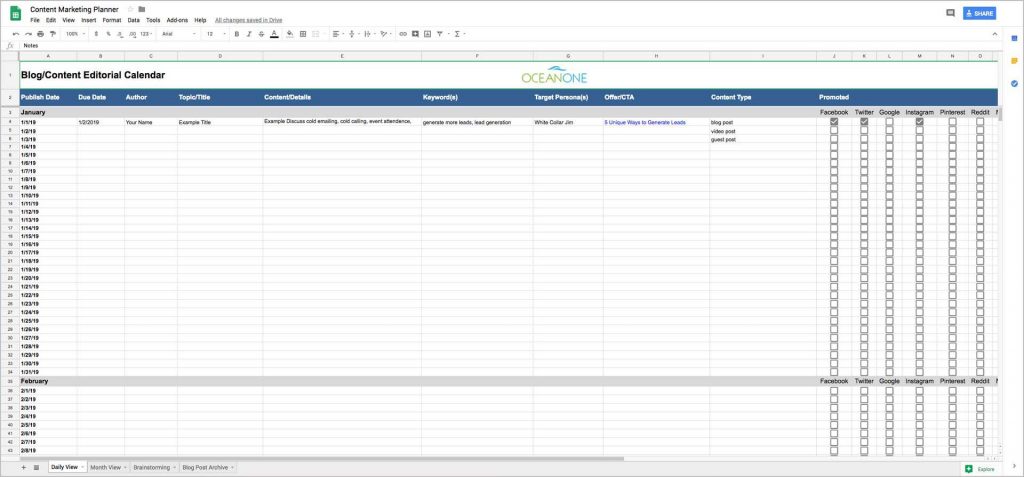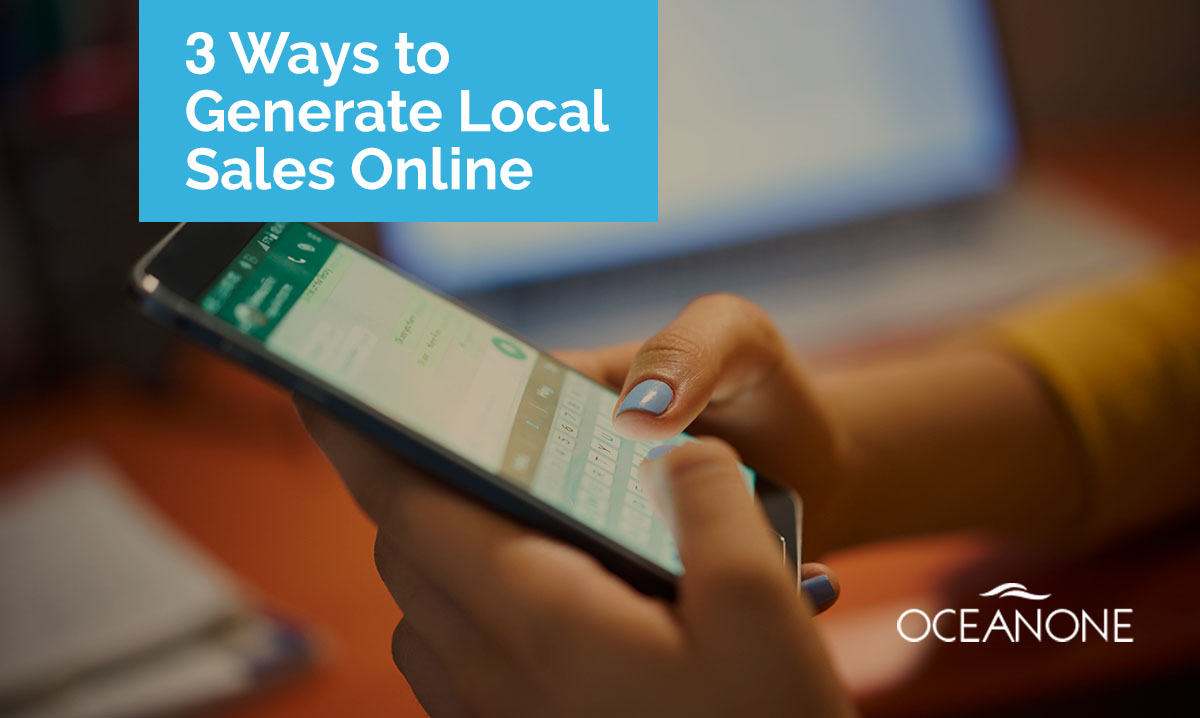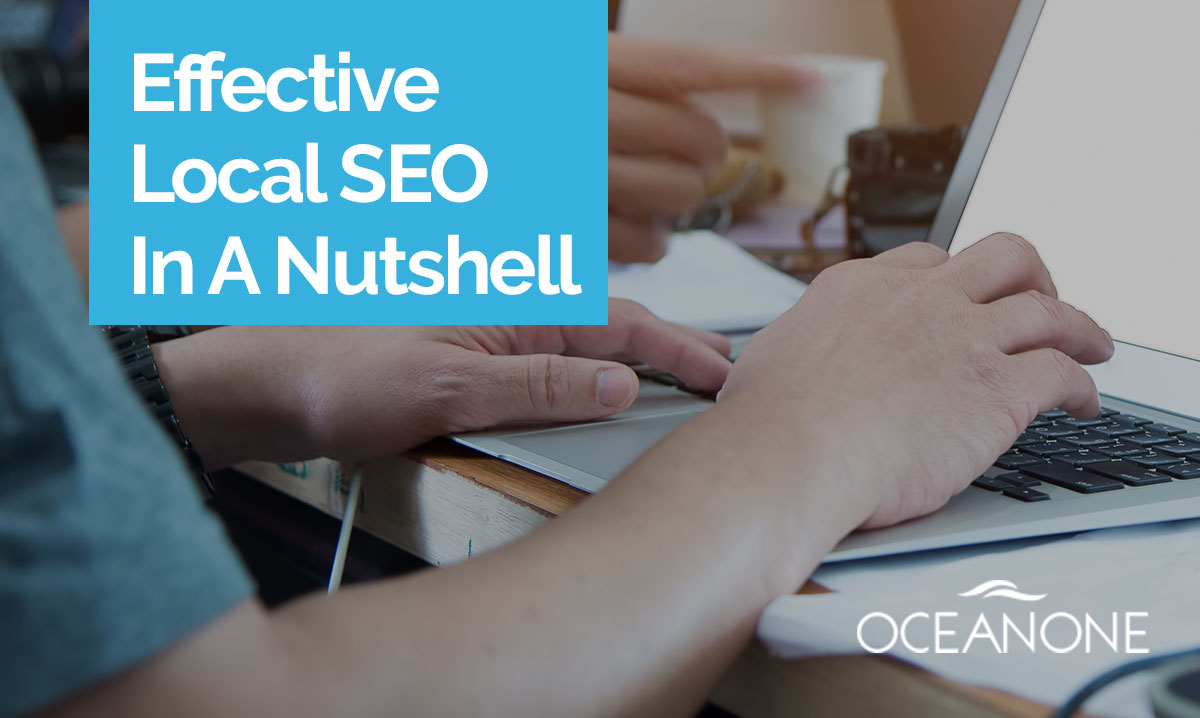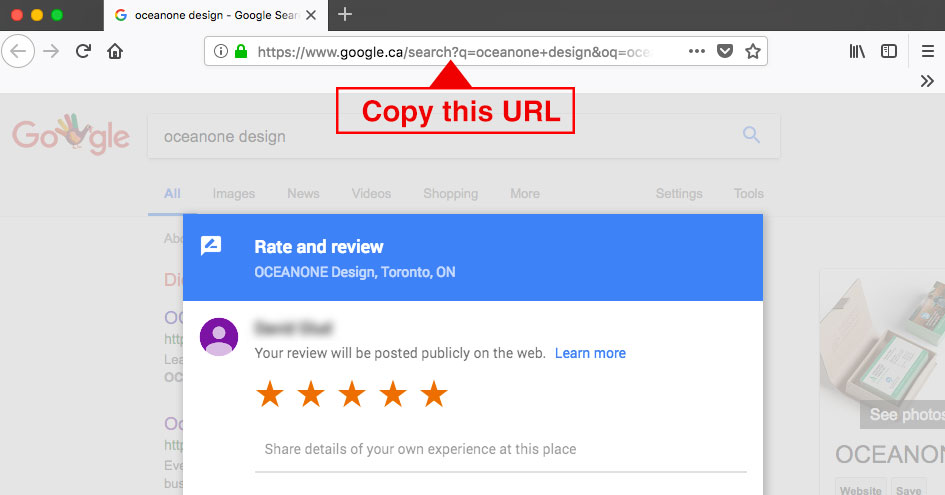
by DG | Jul 29, 2020 | Creativity, Branding, Design, Uncategorized, Web Design, Website Design
Updated May 11, 2021
Every company, no matter what size, needs to have a professional looking website. It can be overwhelming to those who have not gone through the process before. It is essential for your business so whether you intend to develop a website in-house or outsource it, gaining a good in-depth understanding of what’s important from the web design and technical perspectives is certainly worth your time.
Getting a small company site can be among the greatest obstacles that small company owners need to deal with. The job ends up being a lot harder as the choices are seemingly endless and the expenses can easily getting out of control. The web designer needs to be able to produce a website that is not only aesthetically pleasing but can drive significant and appropriate traffic to your organization to produce more leads or sales and decrease the issues that users commonly experience like slow load times, broken links, poor mobile experience etc. The possible technical problems are extensive. We won’t go into depth here but just be aware, your designer needs to be experienced or you could be in for some real unforeseen headaches.
So, let’s get into our top 12 suggestions to rock your local business website.
1. Simple but Elegant Web Design
A small company website design needs to be basic yet visually appealing. It represents your business and should therefore make a great first impression. It’s your online store front so make sure the shelves are clean there’s no letters missing on the sign LOL. Your website absolutely must convey that your company is trustworthy and professional. People instinctively pass judgement in about one second give this some attention. Get a few designs done and get feedback from people before you launch the website.
2. Check Out the Competition
We always recommend that our clients have a good look at what other successful competitors are doing with their web design. One should not just look at the site but really think about what is appealing about it. Then like magic, you will likely start to realize what the website is lacking and you’ll start to come up with ideas to beat your competition by doing it better.
3. Don’t Go Overboard on Style and Content
Complex style can overwhelm your audience and don’t over do the amount of text – at least on the home page. There is a temptation to please Google with a lot of text but you need to be strategic about.
One of the best strategies, which will also increase engagement, is to put an excerpt of a given topic and require the viewer to continue reading by clicking through to another page. Sidenote – this will help your “bounce rate” which is counted when someone comes to your website and doesn’t click on anything. An uncluttered overall style communicates professionalism.
Focus on web design that will give your visitors a great user experience.
4. Make it Easy for Google
An uncluttered website, clear material, appropriate URLs, sitemap, and pertinent keywords will enable online search engine like Google to index your small company site with ease. Website design for small company must consist of at least minimal SEO optimization.
Getting listed in Google My Business so that you can show up on Google maps on a local search is also essential.
Our web platform of choice is WordPress for many reasons and it’s Google friendliness is among the top reasons. You get a great selection of amazing SEO plugins to choose from like Yoast SEO or our new favorite “Rank Math”
5. Mobile Friendly Web Design
After Google’s statement of mobile-first index, it would be practically self-sabotaging not to have your local business website be responsive. This simply suggests that your website will adjust and reorganize the page layout when seen on mobile phones. A simple explanation would be that your multi-column page layout will re-flow into a single column layout. That may make it sound simple but sometimes you can spend many hours making sure that all your pages look good on all sizes of phones, tablets, laptops and desktop computers.
Making a website mobile friendly can be quite daunting and there are many tools available to help with the process. One of the tools we like to use that gives us a quick preview of how a page will look on multiple devices at once is Responsinator.
6. Optimize for Incoming Leads
One of the most crucial functions of any small company site is to concentrate on the incoming leads and capture as numerous as possible. Normally prior to buying an item individuals like to do a preliminary research study and contrast, and might not be all set to purchase right away. Put some effort into finding ways to obtain your visitor’s email address. This way you can follow up with them or retarget them with ads so that if they are not ready to buy now maybe they will be later. Sometimes popups work for getting people to give you their email but it is becoming less effective. Popup Maker is a good Popup Plugin for WordPress that’s easy to use. One of the best strategies is to give away something, like a useful information, in exchange for their email. You don’t want to irritate people so don’t be too aggressive with this.
We recently discovered a powerful new pop builder tool from Adoric. It has Machine learning features, Interactive templates and tons of other features like Email collections, lead generation, content promotion and more. It’s an excellent solution for marketing leads and Conversion Rate Optimization.
7. Keep your contact information in Plain Sight
This might seem obvious however this oversight happens all the time. Your telephone number and e-mail address need to be shown plainly on the site and, if possible, at the top and bottom of every page. Develop a ‘CONTACT’ page at the end that includes not simply the contact numbers however e-mail address, physical address of the business, and a map, together with instructions to and hours of operation of your business. Make sure it gets done and you can forget about it.
8. Professional Branding is a Must
Concentrate on communicating expertise and be consistent about it. Developing a brand strategy will help you get control of this. A solid brand strategy will keep On track by providing you with a roadmap for consistent usage of messaging and the appearance of all your imagery etc. Your brand is it just your logo it is the overall feeling that people get when they interact with your company. Our company can help you with developing your brand, read more about brand strategy here. Once you have your branding in place just be consistent with all your fonts and graphics.
9. Style Should be Simple but Distinct
Whether you are developing your site by yourself or working with a small company website design business, your objective must be to produce a site that shows your brand name. The impression is the most crucial and will either draw in or fend off audiences. If you utilize any ordinary design template and your site looks like countless others on the web, you will never ever have the ability to make a lasting impression in your audience’s mind.
A bad home page could cause visitors to bounce immediately. The home page is extremely important so pay a lot of attention to getting that right and it will help to set the tone for the rest of the website.
Visitors expect a smooth easy navigation that can take them from Point A to Point B flawlessly so make sure you give that to them. Make your website work for you, not against you. A basic, easy to use, and tidy website design without unneeded gimmicks is the strategy for success. You can experiment with gimmicks later but build something solid first.
10. Showcase Products and Services Beautifully
Several small company website designs are not able to display their items successfully or they overload it with too many product or services on one page and mess it up. Keep in mind that you just have of a couple of seconds to win or lose a possible customer so work on making an irresistible first impression. If you are a business selling items online then the item images and descriptions ought to be crisp and concise. If you have a fantastic website design but don’t display your products or services well, there’s a good chance your visitors will move on to look somewhere else. NextGen Gallery is a nice plugin for displaying images in different types of gallery styles.
11. Fast Page Load Time
Viewers get restless if a website takes excessive time to load. Guarantee that your small company website design has the best server facilities and bandwidth to support it. A website that is rich with graphics and photos can take a long time to load. There are many tools and techniques to reduce the page load time and it is certainly worth the time and effort to address this right away. A good caching plugin can go along way to help and it’s fairly easy to implement. One caching plugin we use regularly is W3 Total Cache
12. Relevant, Quality Page Content
Last however not the least is the importance of the content on your local business website. This is a significant factor in getting indexed by online search engines. The more relevant your material, the simpler it is for online search engine to discover and index your website. Content relevance will play a major role in attracting the right visitors to your website. Headings are extremely important in letting your readers and Google quickly understand what the content is about so pay close attention to all your headings.
Research study reveals that there are more mobile users than desktop users now which is why it is vital to have a company site that loads quickly and presents a pleasant mobile experience. Google also uses page speed as a crucial ranking factor. According to specialists, a small company website should less than 3 seconds to fully load. The Google Page Speed Tool is an excellent way to find out if your website passes the test.
The absence of a good website can adversely affect your company. Without a site you might loose business to your competitors. For someone to purchase a product or service from a company they don’t already know is a big leap. They will usually want to know and see more about your company before committing. Always keep that in mind and it will help guide you to build a platform to showcase your company in a way that will make people feel comfortable with the idea of being your customer.
Extra Web Design Tips!
Index Your Website
Search engines such as Google, Bing and others search for particular elements to help them determine where your site should rank in a search result. There are actually over 200 ranking factors in the Google algorithm but some of the most important are Page Title, headings, structure, quality of material, keywords, URLs and sitemap. Pay attention to these to get the ranking you deserve. Check out the Google Webmaster Guidelines to understand what you must do to boost your search ranking.
There are several things to setup when you want to get into tracking all of your online activities. You’ll need Google Analytics, Google Console, Facebook Pixel and more. There is a great plugin called Site Kit by Google that makes things easier to get setup is a real time-saver.
Keep Your Website Safe
It’s truly mind boggling to know how many sites get hacked every day. There are bots just going at it all the time – it’s insane and thinking about it too much cold make you crazy.
There are solutions. First implement a backup strategy so that in case your security does fail, you will always have an up-to-date backup so your site won’t be down for long. For this we recommend a plugin called UpDraft Plus.
Now for the security, there are 2 plugins that I like to use. Wordfence and Sucuri are both excellent options and easy to setup.
We hope that the suggestions above will assist you in your web design process to build a successful Local Business Website.
OCEANONE Design offer a full range of design and marketing services so get in touch with us if you need help.
We were voted in the Top Digital Agencies Of 2020 according to DesignRush
#WebDesignBocaRaton #WebDesignToronto

by DG | May 22, 2019 | Branding, Digital Marketing
The importance of an effective, powerful value proposition is widely misunderstood. It may be just a few words (usually 10 words or less) but as a marketer it may be the most important and challenging thing you ever make. It’s important because it will serve as the foundation for all of your other messaging. It needs to be short and unique. It must also sum up the most important things customers need to know about your company or product.
A strong value proposition is a very valuable tool that must be generated from a need in the marketplace, and used to convert even the most skeptical customers.
Developing a value proposition is more of a discovery process than a writing task. It doesn’t matter how much experience you or your marketing team have, it can’t just be a written statement or declaration. It needs to be the result of the analysis of customer activity and feedback and then it must be tested.
It may start with brainstorming ideas but it is optimized and refined with a methodic approach and it’s not as complicated as you might think.
Here are the 4 steps you can use to discover your value proposition and boost conversions.
- Answer this question: If I am your ideal customer, why buy from you rather than your competitors?
- Compare your answer with the claims of your main competitors.
- Keep fine tuning your value proposition until it can be expressed in a single, credible sentence that is immediately understood.
- Once you have a few good possibilities for a strong value proposition, you need to put them to the test.
How do you test your value proposition? Test it using A/B Testing with Google Ads.
You create a series of ads and landing pages to test each one of your value propositions and see which one appeals to people the most. There is a time investment but you don’t need to a large advertising budget to get your answer.
With a solid value proposition in place you can move forward with your various advertising campaigns with confidence.
This simplified article introduces the basic principles of developing a value proposition. It’s purpose is to provide a basic overview of processes we learned from MECLABS.
If you would like to find out more about how we can help your company develop a value proposition or if you have any other questions about marketing, please don’t hesitate to book a free consultation.

by DG | Mar 23, 2020 | Digital Marketing, Online Marketing
Updated April 4, 2022
There has been a growing trend in the world of business to focus on core competencies and outsource the rest of the day-to-day functions. By focusing on what the company does best many management teams have been able to realize significant cost savings and enhance the profitability of their firms.
Many companies have already discovered the value of outsourcing their manufacturing to lower cost producers, but there is money to be saved in outsourcing other services as well. For instance outsourcing marketing services can yield significant cost savings while providing better results for the company and more excitement on the part of consumers.
Small Companies Benefit from Marketing Outsourcing
Whether they are well-established companies or new startup companies, small businesses can benefit greatly by outsourcing their marketing services to qualified professionals. Many small companies will not have the funds necessary to hire and staff an entire department of creative designers and ad writers, and outsourcing those marketing services can put the small firm on an equal footing with companies many times its size.
From a marketing perspective it can be hard to tell the size of a company – good marketing looks good no matter what the size of the firm associated with the ads.
One mistake many entrepreneurs make is trying to do everything themselves. While the desire for control over the quality of the message is certainly understandable, trying to do everything on your own can backfire badly.
Unless you happen to be a marketing guru as well as an entrepreneur it may be better – and more cost effective to turn the marketing reins over to those with years of experience creating and running successful ad campaigns. By maintaining control over the finished product but outsourcing the process, entrepreneurs and business owners can have the best of both worlds.
Outsourcing marketing services also makes a great deal of sense for small companies that are undergoing periods of rapid growth. It is difficult enough to scale up vital functions like administrative duties and finding suitable office space, and ramping up the marketing department can be even more of a challenge.
By focusing on managing the growth of the company and outsourcing where they can business owners can make the transition from tiny startup to thriving small business that much easier.
Large Companies Benefit from Marketing Outsourcing
Of course it is not just small companies that can benefit from the power of marketing outsourcing. Such outsourcing is also the perfect solution for companies who are trying to do more with fewer resources. Companies who need to downsize without losing their brand identity or sacrificing their marketing prowess can look to marketing outsourcing firms to fill in the gaps and make a smooth transition.
Marketing firms can serve as either a supplement to a smaller and leaner marketing department or as a replacement for that department. This allows companies to be more flexible as they trim costs and find the right business structure in the new economy.
Large companies who are ramping up the size of their firms instead of cutting back can also benefit from outsourcing their marketing services. Rapid growth is both a blessing and a challenge for many companies, and it is important for companies to learn to manage their growth intelligently.
By focusing on the core of the business and outsourcing services like marketing smart companies can keep their brands intact even as the company continues to grow and change.
Outsourced or Full-Time Staff, what’s better?
Digital Marketing is quite complex and it has been said that it changes 8 times faster than most other industries. It’s constantly evolving, so staying up on the latest best practices is no joke and could lead to disappointing results if you’re not using the latest tactics.
Companies that provide marketing services survive by reputation and delivering successful results. For this reason alone it really makes a lot of sense for companies to go with outsourced marketing because most marketing companies will go a long way to make sure they deliver a successful campaign. A great result will keep you coming back and they can count on you to enhance their reputation and not diminish it.
A company can actually have more control of cost when outsourcing. A large full-time marketing staff can very expensive if you plan to have them do everything in-house. It is also a long-term commitment which of course it makes total sense for some businesses. However, for many companies, it makes more sense to outsource where they can set a specific budget to get projects done.
Have Teams of Experts Working on your Marketing Campaign.
When you outsource your marketing services to a good company there will likely be several highly-skilled people working on your project. A single campaign usually involves a long list of different elements that could all benefit from the input of an expert in that area.
For instance a campaign to promote your new product or service may need a list of experts such as: Marketing Strategist, Copywriter, Graphic Designer, Photographer, Video Director, Video Editor, Actors or Spokesperson, Facebook Ad specialist, Google Ads Specialist, Social Media Strategist, Social Media Campaign Manager and a Project manager who will deliver the reports to you every month.
This is an example of the various tasks that may be involved, it could certainly be a lot more or maybe less but you get the idea. You need a lot of people who know what they are doing. If you are a large enterprise it probably makes sense to have all these people on a full-time salary but for many companies it is more practical to develop a strong relationship with a good, reliable marketing company.
It can be a difficult decision but when you take some time to weigh the pros and cons, the answer should be quite clear and you can move forward with your decision.
We can help and we are proud to say we have been voted one of the Top Custom Website Design Companies in the designrush agency listings.
Contact us to day to get started.

by DG | Aug 25, 2020 | Social Media, Digital Marketing, Online Marketing
In recent years, we have seen great advancements in data connectivity and a rise in mobile users. Due to this, social media has risen up as a new platform for marketing. While the conventional platforms have not yet become obsolete and still play an important role for some businesses, social media not only provides you with an opportunity to target a wider set of audience but also enable you to interact with them at a more personal level.
So, before you start your social media marketing campaign, it is very important for you to have a well-thought-out strategy ready to be executed. This will not only help you to identify the hurdles in social media marketing but you will also be able to use the right tactics to tackle these hurdles and reach your goal in the time.
Keep A Business Objective in Mind:
Social media has its own perks and by using it effectively, you can achieve many things. It has made a lot of things easy such as performing customer service, engaging with customers, increasing web traffic, expanding the audience, getting valuable feedbacks and much more.
But to achieve all these you need to have a goal in mind that you can work towards. Now to achieve your objective, you need a strategy and you need to very careful while making it. Don’t let social media make your objective, instead make your own business objectives and let the social media drive those them.
Optimize Your Content
You probably have read many blogs in which they mention that your content must be high quality, original, relevant and appealing to your audience. But how does one create a content like that? If you want to position your brand at a very high position in your industry, then you should take a look into what the successful brand are already doing.
Follow 60/30/10 Rule
This rule means that you should create and post 60 percent of the content that is relevant to your product. Share 30 percent of content that is relevant to the local community or a non-competitive local business and share 10 percent of the content regarding sales and promotions of your services. This will help to create high quality content and still maintain the consistency.
Your Content Must Be Shareable
Better than original, high quality and relevant, you must put focus on content that is shareable. If you are confused what is content is most shareable, take a look at your competitor’s activity and note what content gets the most likes, comments and shares. Now go back to your project and start creating posts and curating content that has similar elements but better. Sharable content can include…
- How to Posts
- Positive Content
- Trending Topics
- Social Causes
Be Present
This is the easiest way to talk directly to your customers and you can do that without spending any money. Be sure to like, comment, share and answer content relevant to your niche as well as on monitoring and engaging. It can be challenging to optimize the time you’ll spend on this activity so keep in this in mind.
Good news is that you don’t need to monitor all the social media channels all the time. A good way to start deciding where to be present is to look where your competitors are. For instance, if they are posting more on Instagram then maybe you should start paying attention to that platform too.
Share compelling visuals whenever you can
People now days, specially millennials are always in a rush, so you get only a few second to grab their attention. You need make those few seconds count, else they’ll move on to some other post or website. So, always try to include quality visual components in your posts because if your content seems to be below average no one will stop scrolling and see what you have to offer. Posts including image produce 650% more engagement that text-only post and is more like to get shared 40 times more. Again good quantity visuals are important as they tend to increase the people’s willingness to read it by 80%.
Prepare to Spend Money on Social Media Marketing
“There is no free lunch”. Yes, this also applies here. Fact is that organic growth is dying. Platforms like Facebook, Google and Twitter have updated their apps to prize more to paid content and less to non-paid content. This means it’s harder to get space in your customer’s timeline. Now, what would be the point of spending so much time and effort in producing content, if nobody is going to see it.
However, you must understand that you should prepare before you start to pay, otherwise you’ll be just wasting money. Now the question arises that how much should you spend? Well, this all depends on the nature of business and target customers.
When we are talking about Facebook in particular, there are a few approaches. If you are promoting something specifically like a Product Sale or Signing up for a mailing list you should run an ad campaign because there is a lot that you can control. There is much to know about Facebook Advertising strategies which is beyond the scope of this post. In fact we have a Free eBook called “How To Win On Social Media” on this topic. See the signup to the right of this article.
USEFUL TIP – Sometimes you just want to get people to read your blog post. In this case use “Boost” and set it for $1/per day for 7 days. This is very low cost exposure but “what’s the value?” you ask? If you have Facebook Pixel installed on your site you can use Google retargeting ads so those visitors to your blog post will see your ads on other sites. They will become more familiar with your brand and you’ll increase the likelihood of them buying from you.
DOWNLOAD Our Free Social Post Planner (In Google Sheets, click FILE > make copy). It has a daily, monthly and archive view as well as a brainstorming tab.
Get Your Content Shared
Do you best to encourage people to share your content. There are also some great services like quuupromote.co that will spread your blog posts to get shared by influencers for a small fee and this works great. There are similar services but this is one of our favourite and very affordable.
Grow Your Following
- Post frequently – 4x per day if possible
- Optimize your posting time
- Use visual content – Photos – & Videos
- Use hashtags strategically
- Engage with replies
- Create an inviting profile
- Find followers within your network
A special note about Instagram…
How to quickly grow your Instagram Following.
When you post something on Facebook, how many people engage with your post? 5? 10? 20? Instagram is very different. With zero followers you can get a lot of likes.
How you say?
The magic of Hashtags!!!
With Instagram you can post up to 30 hashtags per post! That’s a huge number. Now you just have to be strategic about selecting the right ones.
With a new account you should put up about 12 posts.
You want to find relevant hashtags with 50k-300k images per hashtag. After you get over 10k followers, you can use more popular hashtags, but at the early stage don’t go after hashtags with more than 300k images because you’ll get lost in the feed and get zero engagement.
Your goal is to get featured within the 9 top posts under each hashtag.
Moving forward, you should post 3-4 times per day.
Instagram doesn’t work for every kind of business. It’s a very visual platform. If your business is not very visual, like accounting or insurance then Instagram is probably not worth the time. Think about whether you could come up with 3 or 4 good images per day to help make your decision about trying Instagram. Accounting and insurance came to mind as not being visual. However, I have not looked into that and there may be companies in those categories having success.
Repeat what worked
Don’t get disheartened if something didn’t work just try something else. Don’t give up on the idea of using social media as your marketing tool. And if your social media efforts were successful, just stick to what you have been doing. It is as simple as that. Just if one thing didn’t work for you doesn’t mean that nothing will work. Try again, just stick to the basics, redefine your audience and reconsider about the amount of investment.
Social media is great tool for small business owners as it is unique and it can take a company’s fame to new heights, broaden its reach and can create a wide range of customers. But all this is going to work only if you are determined to do it.
If you need help with your Social Media Strategy, our design agency offers a full range of Social Media and other digital marketing services. Just click here to book a Free Consultation.

by DG | Jan 3, 2019 | Content Marketing, Business, Digital Marketing, Online Marketing, Social Media
When you’re creating an online business, you hear, over and over, that you need to be a master of content marketing to build your online brand. But how do you create the content marketing strategy that works? How do you turn your business into a lean, mean, content creation machine?
Define Your Purpose
So you’ve decided to start a website/blog. What are you going to talk about? Are you going to relay and interpret industry news? Talk about your products? Talk about the customers who are satisfied with your services?
Educate your customers on how your products can make a difference in their lives? All of these topic areas can make great content blogs, and the best ones combine many of these elements to blend into a multidimensional whole.
To make sure that your business isn’t just recreating the content of your competition, it’s worth surveying the other blogs in your niche that exist. Find out what space others are occupying so that you can make a space for yourself.
Do Your Research
Beyond finding out what your competition is doing, also do research on keywords, popular searches, and common questions in your industry. After all, if your blog is going to become a destination, you need to create a roadmap for your audience.
Answering their questions, catching their interest, and advertising yourself through social media and search engine results is the first step toward making yourself visible to them.
Make a list of topic keywords that can be headlines as well as phrases that you can use periodically throughout your content posts to attract attention from search engines. Use the brainstorming tab in our Free Content Marketing Planner.
If you need help coming up with ideas for your posts, checkout Neil Patel’s great post called How to Come Up with 93 Blog Ideas in 10 Minutes.
Create an Editorial Calendar
One of the most frustrating things to see as a consumer of content is that businesses and bloggers often fail to pace themselves with blog creation. They post several topics all at once in the first few days, and then forget to post for days and weeks on end.
This doesn’t work for multiple reasons. First, to keep your readers coming back, you need to be continuously creating new and useful content. Regular refreshment tells your site visitors that your website is up to date, which helps the page to climb the rankings. Second, your customers need reminders to come back and find your fresh content.
The proliferation of social media has pushed the now into our minds; we are less concerned with what happened yesterday, and what to know what’s going on right now. You need fresh links to draw in fresh audiences to share on fresh timelines. To get that, you need to create regular content.
Before you start blogging, decide how often you want to post – once a week is a bare minimum, but more than once a day is usually overkill – and make sure you have a month worth of topics ready to go.
Keep yourself several days ahead with blogs scheduled to post to your site and share themselves to social media at appropriate times. By automating everything, you maximize exposure.
When you’re tired and not sure what to say, have a stable of ideas to go back to; it helps you keep your content flowing.
For in depth knowledge about blogging, Ryan Robinsons website is one of the best resources you will find.
DOWNLOAD Our Free Content Marketing Planner (In Google Sheets, click FILE > make copy). It has a daily, monthly and archive view as well as a brainstorming tab.

Getting Exposure for Your Content using Social Media
Naturally you you want to make sure people see all this great content you have put all this effort into creating it. There are many ways to promote your content. We won’t cover the topic of promotion in depth here but we will talk about social media. It’s a big one.
After each piece of content you create, you should immediately share it on all your chosen Social Media platforms. Most companies use at least Facebook, Twitter and Google My Business.
Others like Instagram, Pinterest and Snapchat are chosen depending on the industry you are in as some are more visual than others. For example, Fashion and Beauty type businesses will definitely want to be on Instagram and Pinterest while an accounting firm probably won’t.
If you really want to benefit from Social Media you need to post a lot. Like several times a day. You may be thinking, how are we ever going to produce enough content?
This is where content curation comes in. You don’t need to be the author of everything you share on Social Media. In fact it’s a good idea to share other people’s content as long as it’s relevant and useful to your audience.
Social Sharing
When it comes to social sharing you need to get the balance right, A common strategy is the 5:3:2 rule.
So for every ten posts:
5 should be content from other sources that are relevant to your audience, (curated content). Keep in mind what your reader would be interested in and it will keep them more engaged. There’s a ton of these types of posts that can curated and shared. Sign up with a service like Feedly, choose relevant topics and you will see then in you account every day. Then simply choose the ones you want to share by copying the URL and pasting into the scheduling app of your chosen sharing app (see below) .
3 should be original content such as blog posts or videos, that would be interesting to your audience. It can also be about Product promotions, Product information etc.
2 could be about your staff so your audience gets to know your company which helps build a relationship and builds trust. These post could also be Customer stories or case study in nature.
Also at any time you could announce special offers, trade show events or any other special announcements.
Schedule your social posts with an app.
Your social posts could be planned in a Google Sheet like the one above but in reality we find it more practical to use a web application like Buffer, Later, or Hootsuite. Lately we have been liking Later. These apps save a few steps in the workflow and it’s much easier for everyone to contribute. These all have a free tier entry level.
Accept Feedback from Your Clients
When you create a blog, make sure you have a way for your clients and customers to reach out to you with questions. They might be simple – how do I use this product to accomplish this task – or more complex – what position does your company take on this situation? Some of the best articles are those where a company responds to customer questions and concerns. They show that you’re listening and you respond to your audience, which does more to further your brand than almost anything else can.
This is easy to implement if you have a website built with WordPress. If you need help with WordPress, this is and area of expertise for us. In fact we are recognized as a top WordPress Website Design Company on DesignRush.
When you create content, you’re furthering your company’s brand, building your sales funnel, and developing tools that increase your company’s position and discoverability. Treat your content marketing just like any other aspect of your business; proceed with a plan, create regular deadlines that you can meet, and take it seriously. By doing these things, you’ll make sure that your content drives your business forward and creates a responsible relationship with your customers.

by DG | Oct 30, 2018 | Digital Marketing, Business, Online Marketing, SEO
Being online is critical for getting local business. Most people think the internet is just a way to target worldwide customers, but it can also be used effectively for local business.
So how do you generate area specific customers from using the net? There are a few methods that work. Here are three of the best:
#1) Google local
Local.google.com is essentially an “area specific” search engine. When somebody uses it, they just type in the business you are looking for, such as “general contractors.” Then the map will pinpoint the general contractors in their area.
You don’t even need a website to appear here. As long as Google knows about your business, you will appear on the map. Google will also list your address and phone number.
How many people use Google local?
More than fifty million people do so every month. Therefore, it’s easy to see why this would be a good place to target.
The smaller search engines like Bing and Yahoo have their own version as well. It would be a good idea to get listed with them as well. However, Google is the most important, because the vast majority of people use it for local searches.
#2) SEO
Despite the fact that Google local is so popular, tons of people continue using Google.com for their local searches. For this reason, you will want to do an SEO campaign as well, targeting only area specific keywords. For instance, if you are a carpenter living in Toronto, you would probably want to rank #1 for “Toronto carpenters”.
How do you get to the #1 spot?
You will need links pointing to you website. The more links you have, the better. Not all links are created equal.
There are basically two kinds of links: one way and reciprocal. Reciprocal links are where you agree with somebody else to link to their site, as long as they link to yours. This used to be very effective, but that is no longer the case.
Why are one way links the best?
This is because Google knows if another website links to yours without getting anything in return, your site must be quality.
Where should you get one way links?
Guest posts, directory, forum and blog links are among the best out there. For many terms, focusing exclusively on these sites will get you ranked. Reaching out to other relevant website and asking for a backlink is timing consuming but well worth it when you succeed at it.
#3) PPC advertising
Pay per click campaigns allow you to geo-target you campaigns. This allows you to specify which locations you want to show up for.
For instance, if you target the geo-target the keyword “home renovations” to only Richmond Hill, you will only appear when people in Richmond Hill search for that term. If somebody from Windsor types in the same keyword, you won’t appear in their search results. In other words, even though it doesn’t have the word “Windsor” in the keyword, you will still only appear when local people search for it.
The bottom line is, if you aren’t using the internet to generate local sales, you could be losing a lot of money. Hopefully these three tips will help you get started.
If you need help with this, contact us and we’ll setup a time to discuss it.

by DG | Aug 9, 2020 | Content Marketing, Business, Digital Marketing, Online Marketing, Web Design
Every online business should develop lead generation strategies to move prospects into their sales funnel. While some visitors will be willing to make an immediate purchase, the vast majority will need to warm up to a product or service. Part of the reason for the success of big brands is the fact they have invested in growing their recognition and trust. When people visit a site from a recognized brand, they are already primed to purchase. Most small businesses do not have this brand recognition, but using the following strategies on a consistent basis will be enough to move a high percentage of visitors into your sales funnel.
Analyze the Competition
Many different tools let you find out the strategies your competitors use. From individual advertisements to landing pages, you can study the sales funnels of successful businesses. Look at the top performing sites and find ways you can tweak them to get some quick improvements. Useful Tools: SEMrush
Study Popular Content
It is also possible to look at the results of any blog and social media content. You can see how many likes, shares, and reposts a piece of material received, enabling you to craft videos and articles you can be confident will find an audience. Useful Tools: buzzsumo
Try something new – View this article as a Google Web Story:
Use Social Media Efficiently
Social media is essential for generating leads, but it is reliant on your ability to develop a system. Influencer marketing is currently working well, allowing you to tap into existing audiences. It is also vital that you adapt social content to suit individual sites, thinking about the reasons viewers are using the particular social network. Useful Tools: musefind • Intellifluence
Targeted Ads
Paid advertising can send you leads quickly, but they may convert at a low rate. Instead, focus on researching your audience first, understanding the demographics and interests of your ideal buyers. You can then target your ads to the perfect audience and stand a higher chance of being profitable. Useful Tools: Google ads, Facebook Ads
Develop a Podcast
Podcasts are still reaching large audiences, with listeners eager to find content in their favorite niches. A podcast might take time to grow, but you can build a following of targeted and motivated people. Many of your listeners will also promote you to friends, helping to increase your leads organically. Useful Tools: How to start a podcast
Build Relationships
Trying to build an online business alone is difficult. When you can develop tactical partnerships, though, it is possible for all parties to grow. Most industries have various sub-niches that you may not directly target. However, audiences will have overlapping interests, so a small number of businesses could promote each other without losing their audience. Useful Tools: Join Facebook Groups
Focus on Video Marketing
Integrating video into your content planning is essential. Sites like YouTube and Facebook have vast numbers of users willing to watch video content. Creating short videos allows you to offer value to your viewers, before asking them to subscribe or go to a particular page to enter your sales funnel. Useful Tools: 10 Top Tools for Creating Short Videos That ROCK
Create a Contest
Contests work well on social media and blogs. Asking someone to give you their email address requires trust, but the barriers get lowered when there is an enticing prize available. While you can use tools to create contests easily, it is important that the award is relevant if you want to reduce freebie seekers. While there are many ways to launch a contest, we think Facebook is the best place to run a contest. Useful Tools: How to Create a Facebook Contest that Actually Works
Find Industry Forums and Groups
While strategies like paid advertising can bring vast numbers of visitors, there are alternative methods that will provide smaller numbers of targeted leads. Industry forums, Facebook groups, and Q&A sites can all bring consistent leads that will convert at a high rate. Useful Tools: Google Search “Your Topic” + forums and in Face book search “Your Topic” + groups,
Optimize Your Squeeze Pages
Squeeze pages are highly effective ways of securing leads as they limit the numbers of options on a page. Testing different elements on your squeeze pages will lead to varying results, but you should eventually develop an optimized property. Testing headlines, text and video combinations, call-to-action buttons, and incentives can all play a part in the optimization process. Useful Tools: How to Create a Squeeze Page That Converts at 21.7% (Case Study)
Understanding Your Potential Customers
While it is possible to make an immediate impact with some visitors, most prospects need time before they will make a purchase. Relying on quick sales won’t help to build an enduring business, with the cost to find a customer typically being high.
These methods are all based on building your company’s authority and building trust with new prospective customers.
Even when using paid ads, start with getting engagement and provide useful information. Then retarget with sales oriented ads to people who have engaged with that content and create lookalike audiences of those people. This will increase you conversion rate.
By implementing these lead generation strategies into your business, you should have no trouble developing a consistent flow of new customers.
We hope you find these DIY tips for lead generation strategies useful. If you are having difficulty finding the time to execute these methods we can help with any of these strategies. Just contact us for a free consultation.
OCEANONE is voted one of the top Web Design Companies in the designrush agency listings.

by DG | Oct 18, 2018 | Digital Marketing, Content Marketing, Branding, Business, Online Marketing
Today’s advertising mediums include more digital channels than ever before. Factors such as faster reach capabilities, lower advertising costs, and global branding opportunities make digital marketing a viable avenue for building awareness. When creating a digital marketing strategy, it’s imperative to plan out each messaging deliverable, communication channel, and content strategy so that you don’t lose yourself in a whirlwind of social media accounts and content deadlines.
Approaching your strategy means taking initial steps to determine what your end goals are and then devising a practical plan to bring them to fruition. Here’s a 4-step process for creating a solid digital marketing strategy.
- Create A Finish Line
Know what your goals are before you embark on your strategy. Create a list of measurable short and long-term goals. For example, are you looking to increase sales? If so, by how much exactly? Are you looking to increase your social media followers? If so, by how many exactly? And on what platforms? Don’t rely on vague goals that can’t be measured.
Put numbers to your goals. For instance, we want to generate 800 leads in one month, Increase sales by $5,000 this month or gain 1000 Twitter Followers in one week. Whatever it is you want to achieve, make it a number and then you can figure out a way to get there. Then you can track and measure your results to see whether you were successful or not in achieving the goal.
If you achieve your goal successfully, great. If not, look at what worked and what didn’t make some adjustments and try again. Try different messaging or images or maybe it was just not enough budget. If you’re tracking everything you should be able to figure out how to improve your results. Expect that there will be some trial and error.
Setting realistic goals gives you accountability and allows you to forecast things such as cost, time, and resource allocation. You don’t want to have to guess what your marketing budget is, and you certainly don’t want to assume which team members can complete certain tasks. Create realistic goals and milestones.
- List Your Mediums
What digital marketing channels do you plan on using to get your message to your audience? Are you planning to focus on one main channel or a combination of three or more? Consider making a list of 10-15 potential marketing channels and then narrow it down to your top five. Next, find out which platforms work best for your target audience based on their demographic and online behaviour and then decide which ones work best for your plans. Laser focus in on your main channel to help you get the initial traction that you need when you first begin your campaigns.
- Plan Out Your Content
Knowing what type of content you’ll create and how often it’ll be delivered is crucial to your digital strategy. Whether it’s article writing, social media posting, or video production, there should always be content that’s being created behind the scenes. Find out which types of content work best for your products and your audience and then create a calendar to keep a steady messaging stream flowing your audience’s way. Content calendars are essential to digital marketing, as they help you avoid the headaches and confusion that can come with last-minute content development.
- Implement, Monitor, and Measure
Once you’ve outlined your digital strategy it’s go-time. Make sure that you have all of the resources you need. Make sure that all of your team members know their deliverables and when they’re due. And most importantly, make sure that you’re monitoring and tracking your progress throughout the entire time. Know what metrics will be used to track each goal, and if you fall short of meeting a goal, use it as a lesson for your next project and campaign. The more you monitor and track your activities, the better insight you’ll have on what types of content your audience responds to best.
Setting up Google Analytics is the most important step to track all your results. There are many online tools out there to help you track all of you digital marketing activities and choosing the right one depends on the depth of your campaign. If you are only using Google ads, then tracking through your Google Analytics and Google Ads control panel are probably sufficient. However if you ad Facebook Ads or any other advertising channel to the mix, there is a lot more to track and you’ll want those reports to be side by side for easy evaluation and comparison. As I mentioned, there are a ton of tools out there price according to their level of capabilities. We have a free tool that is great for tracking your Facebook and Google Ad campaigns. It’s called Advertising Intelligence and you can read more about it on our pricing page.
A well-planned digital marketing strategy will ease the confusion that can come with setting up marketing campaigns. Once you have your content and channels figured out, it’s just a matter of setting up the right goals and metrics.
This sounds simple but it can be overwhelming without some guidance. We would be glad to help you with a Free Marketing Strategy Consultation where we will discuss your goals and we can provide you with solid advise to start building your successful Marketing Strategy!
This is a high level view of what is involved in building a digital marketing strategy. For a more detailed deep-dive, check out this post: Execute a Powerful Marketing Strategy to Grow Your Business

by DG | Oct 19, 2018 | SEO, Digital Marketing, Online Marketing
You should always think local when starting a Search Engine Optimization strategy. It’s much easier to rank for longtail keywords that have less competition. The name of your city or neighbourhood added to those keywords can be an easy win so you can rank quickly. That’s the best strategy to get started so let’s dig into Local SEO.
Key factors
First things first. Be sure to sign up on Google My Business (GMB). This will be the centre of your local strategy for getting rankings on Google. There may be a listing for your business there already so you’ll need to claim it. Do a Google search for your company name and you may see a listing for your business on the right side hand side in the search results. If you have not claimed it already you will see a “Claim this listing” button that will allow you to do so. Once you have access to your listing you will be able to add all kinds of information about your business and this will get him placed on Google maps as well. Be sure to upload lots of pleasing, relevant images for your business. You can great insights about your business listing in there like how many people viewed you listing and took action etc.
Writing Posts on Google My Business
We highly recommend that you create a post on your GMB listing everyday for at least 2 months. I know this sounds like a lot of work but it’s worth it and they only allow 300 words and you can back it off after your see your listing get into the top 3 local results for your keywords. Don’t stop completely though or competitors will eventually catch up. Try to keep posting at least once a week. This of course depends on how competitive your category is so you may need to adjust accordingly.
Add local content to your website
Blogging is the most effective way to help your rankings in search engine results. Write some blog posts that are unique to your local area and align with your local business. Doing some good keyword research prior to writing is articles will go along way. By doing so you can find out what people actually search for when they’re looking for your type of business in your area. For instance if you are a roofing company people might search for “toronto roofing company” (720 searches per month) but there are more searches for “toronto roofers” (1900 searches per month) so you should definitely have the data beforehand so that you can get the most out of your efforts. You can use Google Keyword Planner to get this data. Another new favourite free tool for keyword research is Ubersuggest from SEO expert Neil Patel.
Get listed on directories
Leveraging online directories is an excellent way to improve your online visibility. Claim any listings you can on sites like Yelp and Yellow Pages and other similar ones. Make sure all your profiles have the exact same contact information about your business. This is very important. You’ll also have to monitor these listings as many of them except reviews about your business. You need to stay on top of this and respond to reviews good or bad. Your online reputation is really important so I need to take this seriously.
We have a great tool to help you monitor this – checkout the OCEANONE Reputation Manager. And, if you don’t have the time we also provide a fully managed Reputation Management Service.
Here’s an excellent video on how to respond to reviews…
SEO Best Practices
Finally, be sure that you are using SEO best practices throughout your website. Things like properly formatted URLs and keyword rich descriptive title tags as well as descriptive metadata are important to make sure that Google’s algorithms pick up the best possible information about your page. Of course, make sure that your contact information on the website matches exactly what you added to all those directories you just listed on.
These are just a few things you can do to improve your visibility for local searches but they are the most important. Make sure these on-page improvements are done before taking any other steps. Depending on how competitive your category is, this might be all that you need to do to get the results you want. Start there and see how goes. If it’s not enough to get you in the top three local results there are other strategies. It’s not that complicated but it can be very time consuming.
If you don’t have the time, we can help. We have a Free listing builder app to get you started with getting your listing synced up on Google My Business, Facebook and Twitter. Once you have that set up you can easily add one of our paid packages that make it very easy to get listed on the sites we have discussed here. Learn more about it it out here.
Download our list of “Top 100 Sites To Be Listed On“. Our Listing Distribution add-on lets you build accurate business listings on the four major data aggregators—Factual, Acxiom, Infogroup, and Neustar Localeze. These aggregators are referenced by over 300 websites.
When multiple sources have consistent business data, two outcomes occur:
- Google’s WebCrawler finds the same information in multiple places and adds more confidence to their business data
- Good backlinks are created with more referring sources to the business’ website creating better SEO.
Here’s an excellent video on the importance of have accurate listings online…
Also check out our recent post “Online Reputation Management Tips for Boosting your Local SEO” .
If you already have listing and you have experienced Fake Reviews you’ll want to check out “How to remove “Google reviews when you know they are fake“.
It’s also important to get as many backlinks as you can in order to generate organic traffic. If you need help with that or any other SEO tasks, checkout our SEO services page.

by DG | Oct 12, 2018 | Digital Marketing, Business
Every business that has a presence online, would naturally want to be able to maintain a decent reputation. No business owner would want their business to generate negative reviews, which is why they always try to keep a keen eye on social media.
Online reputation management is the term that relates to this perusal of your brand’s reputation online. This term, like every other word related to SEO, has been thrown around quite a lot recently. So much so that brand managers now don’t really know to expect from online reputation management. This brings us to the question of what exactly is online reputation management.
Is it a proven method of maintaining your reputation and local SEO online, or is it just a buzzword? Can it really help you with your reputation online?
We answer these questions and many more in the lines below, by taking a look at the nuances involved in online reputation management, and how it can positively boost your Local SEO.
What is Online Reputation Management?
For starters, online reputation management is perhaps one of the best ways to enhance your presence online. At a layman level this practice relates to studying what people are saying about you, and trying to handle their problems. There’s hardly any business out there that doesn’t have issues arising with customers. While you would ideally prefer to have the issue resolved before the customer takes the matter online, that is usually not the case.
Customers share bad experiences online, and these bad experiences act as a deterrent for other potential customers coming your way. However, you can manage these online complaints through your online reputation management system.
When dealing with negative reviews it is important write a response as soon as possible, be polite, courteous and professional. NEVER be defensive. Try to understand their problem and offer to resolve the problem even if you think they are being ridiculous. You will never come out ahead if you try argue with them.
Here we will list down some amazing tips that you can follow to enhance the utility of your online reputation management system and maintain your Local SEO online while at it.
Be Present on all Web Portals
Social media is a must for every brand. It is best for your brand to be up on social media to not only interact with potential customers, but to also listen to their grievances. A company should have a Facebook, Twitter and Google+ account at least. You can further have an Instagram, Snapchat and other social media accounts to reach out to your customers through new channels.
Now, the journey to excellent reputation management online doesn’t stop with the creation of accounts on multiple social media platforms. The real effort lies in regularly regulating and reviewing these accounts. The worst that can happen for your brand is an online review or complaint by a customer that you haven’t addressed.
This negligence on your part would not just turn that one customer away from you, but would also leave a bad impression on others. Thus, the way forward is to review these accounts and all the complaints that come on them.
Local Listings Establish Your Presence
Search engines use complex algorithms to ensure that the information they are giving out is reliable and can be trusted. As part of this, they cross-reference company information from local listings present across the web to generate information related to your phone numbers, map pointers, email addresses, postal addresses and opening and closing times. Based on concrete evidence generated through these methods, a search engine gives out the required information to your customers.
Now, if your information across multiple local listings is not updated, your local SEO campaign will suffer due to this incorrect information. Search engines will direct customers to wrong addresses and might even give old numbers. To cut out the chances of this happening, ensure that all information pertaining to your company on local listings is updated so that search engines can reference the correct source.
Build a Profile of High Quality Local Reviews
User generated content is still content, and pretty successful at it. Individual reviews might not be able to generate the same impact as a blog or a video for that matter, but by building a profile of good reviews across social media and the internet, you can boost your local SEO.
Having potentially good information associated to your brand, from organic third parties, on highly trustworthy review and social media sites, gives your Local SEO the boost it needs. These valuable reviews give search engines quite a lot of contextual information about you, which they can use to rank your company locally.
Social Proof
Believe it or not, but search engines, including Google, tend to rank local companies with better reviews higher than others that have negative reviews or no reviews at all. This is a tried and tested method by these engines to take social proof as a performance of brands.
For example, Google usually takes a look at reviews coming on its own Google My Business platform, and from other partners that their algorithms trust, including Yelp and Facebook. Based on the information from this analysis, Google’s algorithms develop the social standing of a specific organization in its local setting. The social standing includes answers to questions such as, is the company well-liked and popular? Is there sufficient evidence to suggest that the company gives bad experiences and customer services? Then, based on star ratings and reviews, Google takes the ultimate decision of how suitable your brand is for a searcher’s query.
Make the Investment
Finally, you need to make a sufficient investment to get the best out of your online reputation management plan. Reputation development often requires investment both in the form of time and money. You will obviously need dedicated members to monitor your reputation online and generate results based on that.
Other than that, there is also the need for investment in catering to customer grievances. A simple apology doesn’t make the cut anymore. You would need something along the lines of a giveaway to win their trust again, and use that complaint as a means to leverage your reputation online.
Proactive reputation management might take some time and effort while setting up, but it is a worthy investment that will definitely pay off in the long run.
BONUS TIP – Make it easier for people to leave a Google review.
Here are steps to make it easier for people to leave a Google review about your business :
- Search for your company by name in Google.
- Click on the button “Write a review”.
- A Google review box has pops up, click away for the popup window and copy the URL from the address bar.
- Shorten the URL. The URL will be very long. Use a URL shortener like bit.ly to get a nice sort URL that you can share with people.
Here an example of ours – Click To Review: https://bit.ly/2PhcT7b
We hope these tips will be helpful. If you don’t have the time to deal with all this we do have Reputation Management Services to take care of it for you. It will help with your Local SEO efforts.
Also check our article about dealing with Fake Reviews. as well as Neil Patel’s Definitive Guide to Online Reputation Management.

by DG | Oct 8, 2018 | Branding, Digital Marketing
Fake reviews are an unfortunate reality that many businesses have to deal with.
It’s so easy for people to create a new anonymous account and leave a review that is positive or negative. The worst part is that it doesn’t matter if they are a customer or not, they are free to leave a review and say whatever they like. So what do you do when you want to remove Google reviews?
Before we go further I’ll just say that when dealing with negative reviews that are real it is important write a response as soon as possible, be polite, courteous and professional. DO NOT ever be defensive. Try to understand their problem and offer to resolve the problem.
The rest of this post is about dealing with reviews that you know are fake. I get asked about this often so let’s get to it…
Google Policies
Google has a huge list of policies around this topic but they do not do a very good job of catching policy violations. There is hope however! If you can track these fake reviews and make a case as to why the review is violating Google’s policy guidelines you can get them removed. To do so you can contact them through Facebook, Twitter or on the Google My Business forum.
When you are logged in to GMB find the review that you believe is a fake. You will see three dots stacked on top of one another, click those. Then you will see the option to “flag as inappropriate.” Fill out the form and that’s it. You can also expedite the process by calling GMB support. You will find their support number within your GMB account.
Why won’t Google remove that fake review?
If you can’t show that the reviewer has made a policy violation, they won’t remove the review. The most difficult reviews to get rid of are the ones with 1 star and no comments. Google’s response will likely be that it didn’t violate the guidelines — since there’s no text in the review. Personally I think that reviews without comments should not be accepted by Google – call me crazy – I guess it’s it too much to ask!
If the review is completely off-topic and complaining about a service you don’t even offer then you will most certainly be able to get it removed by Google.
What do you when Google won’t remove that fake review.
The huge problem with fake negative reviews is that Google doesn’t know your customers. Therefore, telling them that the person leaving a review is not an actual customer is not a strong enough case to get that review removed. If the reviewer is anonymous it’s very difficult to prove their identity.
Another problem is that they might not have been a customer. They are eligible to leave a review even if they just called you and you didn’t return their voicemail. Maybe you have a store and they couldn’t find parking… Oh yeah, it’s hard to make everyone happy.
Most small businesses bend over back wars to keep customers satisfied and you just know when you have an unhappy customer so when there’s a fake review, you can just smell it. It seems out of place and it seems to come out of nowhere.
Like I said, sometimes Google just won’t remove it, then what, should you just leave it sitting there?
Absolutely not, there are some strategies to deal with it. Encouraging your satisfied customers is of course one of the ways to help bring up your rating average. However that fake review is still festering and annoying you to no end.
What’s the best way to deal with a fake negative review that Google won’t remove?
Challenge that Faker! Be polite by writing a response something like: “We are quite certain that [username] is not a customer of ours. In fact we are so certain that we would like to offer a 100% refund if you send us the receipt from the gmail account you used to write this review.”
Give them a few days to respond. If they don’t respond to that, then you know it’s a fake review and you should update your review response.
Update your response with something like: “After waiting 1 week for a reply to our 100% refund offer we never got a response. Sadly, it is likely from one of our competitors engaging in the writing of fake reviews for their own gain.”
If by some miracle you are wrong and the review was real, they may send you a receipt. If their reasoning for the complaint is legitimate, then you might want to refund them and in return ask them to delete the review. It’s probably worth it for your business and you have learned something. You might also be able to settle it by fixing the problem that they have complained about.
USEFUL TIP – Make it easier for people to leave a Google review.
To make it easier for people to leave a positive Google review about your business, follow there steps:
- Search for your company by name in Google.
- Click on the button “Write a review”.
- A Google review box has pops up, click away for the popup window and copy the URL from the address bar (see image below).
- The URL will be very long. Use a URL shortener like bit.ly to get a nice short URL that you can share with people.

Here an example of ours – Click to review: https://bit.ly/2PhcT7b
We hope these tips will be helpful. We have a Reputation Management App to help you get control of your reviews. If you don’t have the time to deal with all this, we do have Reputation Management Services to take care of it for you.
Beyond Google
We have focused entirely on getting reviews on your Google My Business page in this post but you should of course not ignore other review sites, Google should be your prime focus though. There are many other review sites that you can benefit from like Yelp, Yahoo Local, Trip Advisor, Trust Link, Trust Pilot etc.
The more you list on, the more you will help build trust for your business, and boosting your local search rankings at the same time.
Have you experienced fake reviews? If have, we would love to hear about it, please leave a comment.

by DG | Nov 12, 2021 | Content Marketing, Digital Marketing, Online Marketing, SEO
Updated: Nov, 12, 2021
You are likely well aware of the concept of content marketing by now. It’s a tactic that helps you engage and attract customers and prospects by delivering quality content that provides value for everyone who visits your site. And the strategy has a lot of staying power.
Here are just a few areas in which content marketing can help you.
Driving Conversion
A great benefit of content marketing is that it helps your company drive more conversions over time. Research shows that companies that create consistent marketing content experience conversion rates almost six times higher than their competitors.
Increasing Traffic and Brand Awareness
Publishing consistent blog posts that engage audiences will help you bring in more traffic to your site over time. According to HubSpot, companies that published more than 16 blog posts per month got almost three and a half times more traffic than those that only published fewer than four posts.
It also helps educate people about your brand and raises the level of brand awareness that is otherwise not there when you don’t publish blog posts outlining what your company does or sells.
Check out our Pro Blogging Packages
Building trust and Fostering Relationships
You can build real relationships with your customers through content driven marketing. It allows customers to really absorb your philosophy and thinking patterns and associate themselves with your values. This allows them to take a peek in to the way that your company does business. It’s a lot more personal and less presumptuous than an advertisement.
Building Credibility and Expertise
Well written and polished content automatically comes across as professional and authoritative. It allows people to see your company as an expert or an authority on the subject of your business. It also allows you to be seen as a major player in the industry.
Cost Effectiveness and SEO Visibility
According to the Content Marketing Institute, content marketing costs 62% less than outbound marketing even though it generates three times as many leads. It also helps your company and topics trend better in search engines, specifically Google. Allowing your content to trend well allows for greater visibility.
Targeting Specific Audiences
It’s important to know exactly who you’re selling to when you’re selling a product or a service. For this reason, content driven marketing is useful to get your message across to your target demographic. It sounds extremely cold and calculating, but it’s useful without a doubt.
Engaging Content Makes a Personal Connection
As outlined above, it’s more engaging and personal than an advertisement. The written word, when written well has a much better connection with your readers and customers than an ad ever can, hence, the emphasis on content driven marketing.
Can bring you Unexpected Customers
It’s incredible that content marketing can bring you customers from so many different places that are not your target demographic. You can use trends and current hot topics to market your products or services to people that won’t normally look twice in your direction.
Do you need great content for your website? As on of the top small business branding agencies, we have great writers standing by that can produce excellent, affordable content on any topic. Check out our packages.
It’s also important to get as many backlinks as you can in order to generate organic traffic. If you need help with that or any other SEO tasks, checkout our SEO services page.














